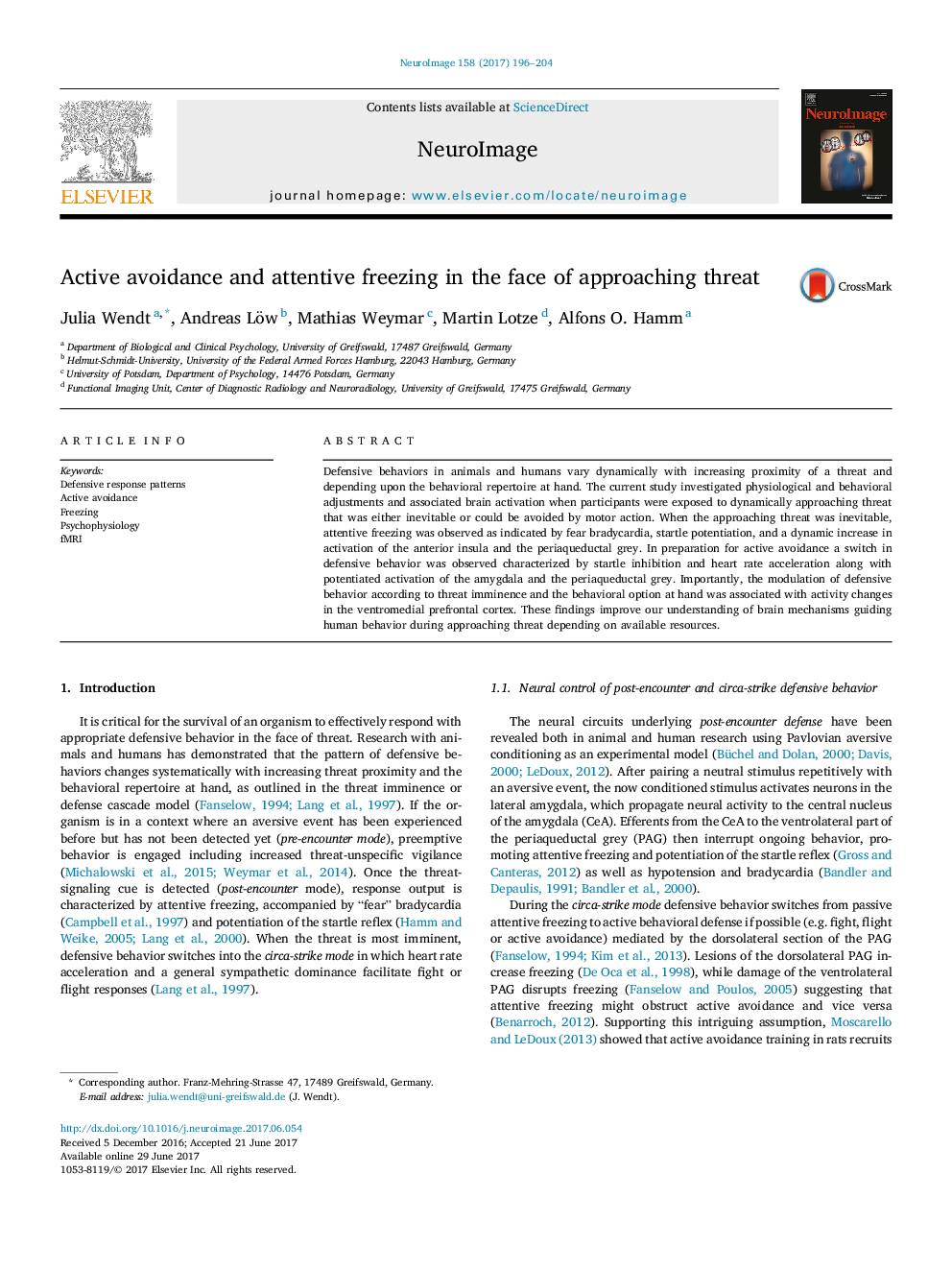ترجمه فارسی عنوان مقاله
اجتناب فعال و انجماد توجه در مواجهه با تهدید
عنوان انگلیسی
Active avoidance and attentive freezing in the face of approaching threat
| کد مقاله | سال انتشار | تعداد صفحات مقاله انگلیسی |
|---|---|---|
| 143834 | 2017 | 9 صفحه PDF |
منبع

Publisher : Elsevier - Science Direct (الزویر - ساینس دایرکت)
Journal : NeuroImage, Volume 158, September 2017, Pages 196-204
ترجمه چکیده
رفتارهای محافظتی در حیوانات و انسانها به صورت پویا با افزایش نزدیکی تهدید و بسته به رپرکتیو رفتاری در دست، متفاوت است. در مطالعه حاضر، تنظیمات فیزیولوژیکی و رفتاری و فعال سازی مغز مرتبط با آن، هنگامی که شرکت کنندگان در معرض خطر پویایی قرار گرفتند، اجتناب ناپذیر بوده و یا می توان از طریق حرکت موتور اجتناب کرد. هنگامی که تهدید نزدیک به اجتناب ناپذیر بود، انجماد توجه مشاهده شد، همانطور که توسط برادیکاردی ترس، پتانسیل انفجار، و افزایش پویا در فعال سازی انسولین قدام و خاکستری پرایاکتیو مشاهده شد. در آماده سازی برای اجتناب فعال، یک سوئیچ در رفتار محافظتی مشاهده شد که نشان دهنده مهار ناگهانی و شتاب ضربان قلب همراه با تقویت فعال شدن آمیگدال و خاکستری پرآبی است. مهم است که مدولاسیون رفتار دفاعی با توجه به تهدید تهدید کننده و گزینه رفتاری در دست، با تغییرات فعالیت در قشر پیش افتادگی ونتومدیال مرتبط بوده است. این یافته ها ما را در درک مکانیسم های مغز که رفتار انسانی را در حین رویکرد تهدید بسته به منابع موجود بهبود می بخشد، بهبود می بخشد.

